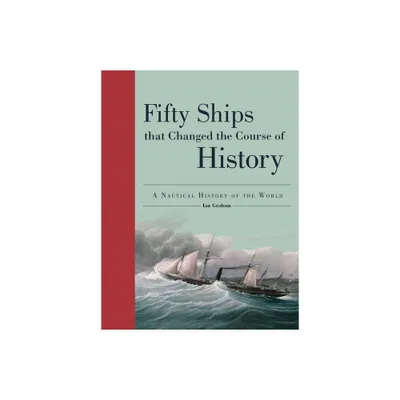Home
Fifty Minerals that Changed the Course of History
Loading Inventory...
Barnes and Noble
Fifty Minerals that Changed the Course of History
Current price: $19.95


Barnes and Noble
Fifty Minerals that Changed the Course of History
Current price: $19.95
Loading Inventory...
Size: OS
*Product Information may vary - to confirm product availability, pricing, and additional information please contact Barnes and Noble
"The brief sections are consistently interesting, and plenty of supplemental illustrations and photos make this a handsome volume... best-suited to curious kids and casual mineralogists."
Publishers Weekly
"A beautiful book, nicely bound and richly illustrated... written in an easy to read, casual style."
Science Books and Films
Fifty Minerals that Changed the Course of History
is a beautifully presented guide to the minerals that have had the greatest impact on human civilization. These are the materials used from the Stone Age to the First and Second Industrial Revolutions to the Nuclear Age and include metals, ores, alloys, salts, rocks, sodium, mercury, steel and uranium. The book includes minerals used as currency, as jewelry and as lay and religious ornamentation when combined with gem minerals like diamonds, amber, coral, and jade.
Examples of the fifty minerals are:
Diamonds: Did a necklace ordered by Louis XV precipitate the French Revolution?
Sulphur: The biblical brimstone now used in organic farming.
Clay: The oldest ceramic object is not a cooking pot or drinking bowl, but a statuette.
Arsenic: Was Napoleon murdered while imprisoned on the island of St. Helena?
Coal: The Romans invented the first central heating system.
Saltpeter: China's fourth "Great Invention" was perhaps not so great after all.
Salt: Once used as currency, we give it little thought today.
Jade: The Chinese fabric of "pajamas for eternity."
Ubiquitous or rare, the minerals described in
have been fundamental to human progress, for good or evil. Many are familiar the aluminum can we drink from, the car we drive, the jewelry we wear. They can be poisons, medicines or weapons, but wherever found and however used, their importance can be easily overlooked. This attractive reference gives us fascinating insight into our undeniable dependence on minerals.
Publishers Weekly
"A beautiful book, nicely bound and richly illustrated... written in an easy to read, casual style."
Science Books and Films
Fifty Minerals that Changed the Course of History
is a beautifully presented guide to the minerals that have had the greatest impact on human civilization. These are the materials used from the Stone Age to the First and Second Industrial Revolutions to the Nuclear Age and include metals, ores, alloys, salts, rocks, sodium, mercury, steel and uranium. The book includes minerals used as currency, as jewelry and as lay and religious ornamentation when combined with gem minerals like diamonds, amber, coral, and jade.
Examples of the fifty minerals are:
Diamonds: Did a necklace ordered by Louis XV precipitate the French Revolution?
Sulphur: The biblical brimstone now used in organic farming.
Clay: The oldest ceramic object is not a cooking pot or drinking bowl, but a statuette.
Arsenic: Was Napoleon murdered while imprisoned on the island of St. Helena?
Coal: The Romans invented the first central heating system.
Saltpeter: China's fourth "Great Invention" was perhaps not so great after all.
Salt: Once used as currency, we give it little thought today.
Jade: The Chinese fabric of "pajamas for eternity."
Ubiquitous or rare, the minerals described in
have been fundamental to human progress, for good or evil. Many are familiar the aluminum can we drink from, the car we drive, the jewelry we wear. They can be poisons, medicines or weapons, but wherever found and however used, their importance can be easily overlooked. This attractive reference gives us fascinating insight into our undeniable dependence on minerals.


















